Outside the walls
Starting in Plaza del Azoguejo is the Aqueduct, (the first monument to be seen in Segovia). From there we can admire the limestone wall and large granite ashlars. It is the most important Roman civil engineering work in Spain. It was built towards the end of the first century to carry water from the mountains to a camp located under the current Alcazar. It has eighty towers and five gates on its three kilometre perimeter.
In the small cobbled square at the foot of the aqueduct, a typical half-timbered house stands, occupied by the famous Cándido restaurant. Next to the Azoguejo is -since 1862- the Artillery School. It is an old Franciscan convent built in the 15th century; its Gothic cloister is remarkable.
Up the street, past the Casa de los Peces, is the Calle de Muerte y Vida (Life and Death Street), whose name alludes to a legend related to the communal revolt.
Returning to Avenida Fernández Ladreda you will reach the Church of San Clemente, a Romanesque temple with a magnificent apse, gallery and remarkable mural paintings.
A little further away is the Church of San Millán. It is a model of the Romanesque churches of Segovia, since it integrates the Islamic influence (decoration and vaults in the Caliphate style), atriums that serve as a meeting place and a slender bell tower in the Mozarabic style built in the image of the Cathedral of Jaca.
Returning to the aqueduct, on the other side is the Church of San Justo. It contains one of the few sculpted tympanums from the Segovian Romanesque and with some valuable Romanesque mural paintings (13th century), presided over by a Pantocrator.
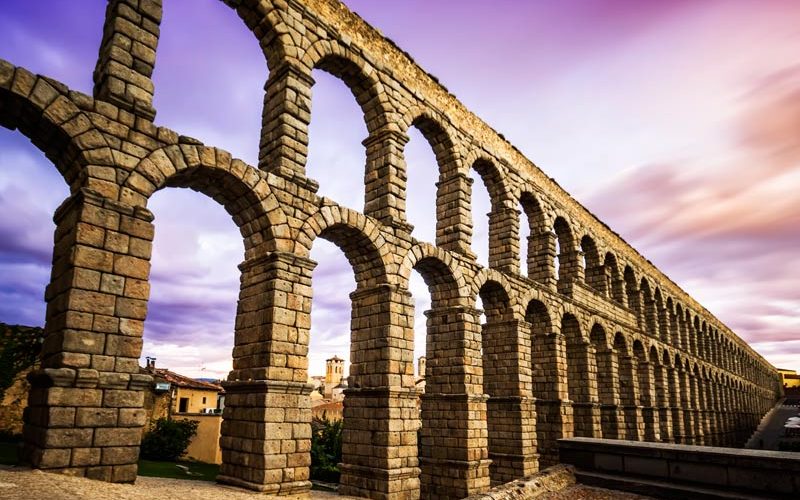
Aqueduct
Also interesting is the Church of San Salvador, a Romanesque-Gothic and Baroque work that presides over a beautiful medieval square with the hustle and bustle of the surrounding schools. A remarkable monument to visit in Segovia.
Then we must recover our car to start the route by car. It can begin in the essential Monastery of San Antonio El Real, old summer palace of Henry IV later turned into a convent.
Following the city’s ring road in the direction of the Eresma valley, we will arrive at the Church of San Lorenzo, a Romanesque-Mudejar work with a double porticoed atrium and a brick bell tower. The central apse stands out in the complex, divided externally by four attached columns that form three central spaces and two presbytery spaces.
On Calle del General Zúñiga you can reach the Monastery of Santa Cruz la Real, founded by Santo Domingo de Guzmán in the 13th century and renovated in the 15th century in the Gothic style. Its front page stands out, with Queen Isabella the Catholic in an attitude of prayer together with her husband. The Cave of Santo Domingo, adorned with a doorway, is also preserved.
Near the Mint, across the bridge, is the Monastery of Santa María del Parral. It currently belongs to the cloistered monks of the Order of St. Jerome, and was built around the church and its cloisters in Gothic, Mudejar and Plateresque styles. It is one of the 15th century masterpieces in Segovia.
The next stop is the Romanesque Church of San Marcos. In front of it, you can reach the unique Church of the Vera Cruz, founded by the Knights of the Order of the Holy Sepulchre of Jerusalem in 1208, although popular tradition attributes it to the Templars.
In the nearby Fuencisla avenue is the Convent of the Carmelitas Descalzas, founded by San Juan de la Cruz in the 16th century, whose tomb is located inside. A stone staircase leads to the convent and the temple, with a single nave and side chapels.
The Sanctuary of Nuestra Señora de la Fuencisla, patron saint of the city, was built between 1598 and 1613. The main altarpiece and the remarkable baroque grille that closes the presbytery stand out, donated by the rich guild of cloth makers of the city.
Inside the walls
The visit to Segovia within the walls is done on foot: from Plaza del Azoguejo to the Alcazar and back.
From the Plaza del Azoguejo is the Aqueduct we can go up Cervantes Street or Real Street. We leave behind the Mirador de la Canaleja and the Casa de los Picos (15th century Gothic-Renaissance decorated with “diamond tips” in granite).
We go on to the Palacio del Conde Alpuente, a Mudejar construction from the 15th century. Returning towards Juan Bravo and in the direction of the cathedral we will find the square of Medina del Campo. It contains the House of Juan Bravo and the Tower of Lozoya. Also the Church of San Martín, Romanesque with Mozarabic and Mudejar elements in arches and capitals.
If we return to the square and resume the journey we reach the old Jewish quarter, where stands the Convent and Church of Corpus Christi. It was a synagogue from the 13th century.
Through Isabella the Catholic we will arrive at the Plaza Mayor. In its arcades are concentrated a large number of bars and restaurants to see in Segovia and above all enjoy them. There you will find the Town Hall (17th century), the Juan Bravo Theatre and the Church of San Miguel (16th century). In its atrium she proclaimed herself Queen of Castile Isabella the Catholic.
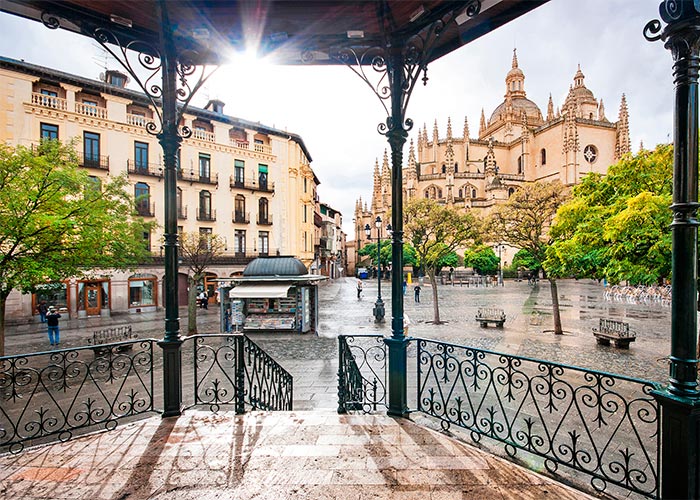
Plaza Mayor
In the square there is also another key monument to see in Segovia: the Cathedral of the Assumption. It is known as “The Lady of the Cathedrals”, built between 1525 and 1768.
After returning to the cathedral we return to the route along Calle del Marqués del Arco and then along Calle de Daoiz. We can see the façades of the Marqués del Arco Palace (16th century), the Convento de las Descalzas (founded by Santa Teresa) and the Romanesque Church of San Andrés (12th century).
At the end we will arrive at the Gardens of Queen Victoria Eugenia, in front of the Alcazar.
The Alcazar of Segovia is another of the infrastructures that we can see in Segovia. It is located on the spur of the rivers Eresma and Clamores. It is a 13th century construction built on earlier works dating back to Roman times.
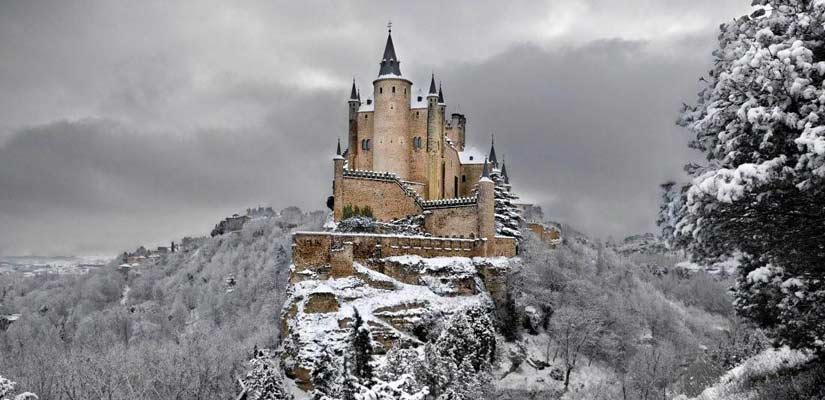
Alcazar in Segovia
Nearby is the Church de la Trinidad, a 12th century Romanesque building that houses paintings by Benson and Pontormo. There is also the Tower of Hercules, a Mudejar construction integrated in a Dominican convent and the Palace of the Counts of Mansilla.
From here we can go to another place not often seen in Segovia: the viewpoint and the beautiful gardens of the Zuloagas, with the Church of San Juan de los Caballeros (11th century). The temple is now the Zuloaga Museum. It has ceramic pieces by Daniel Zuloaga and paintings by his nephew Ignacio who worked there.
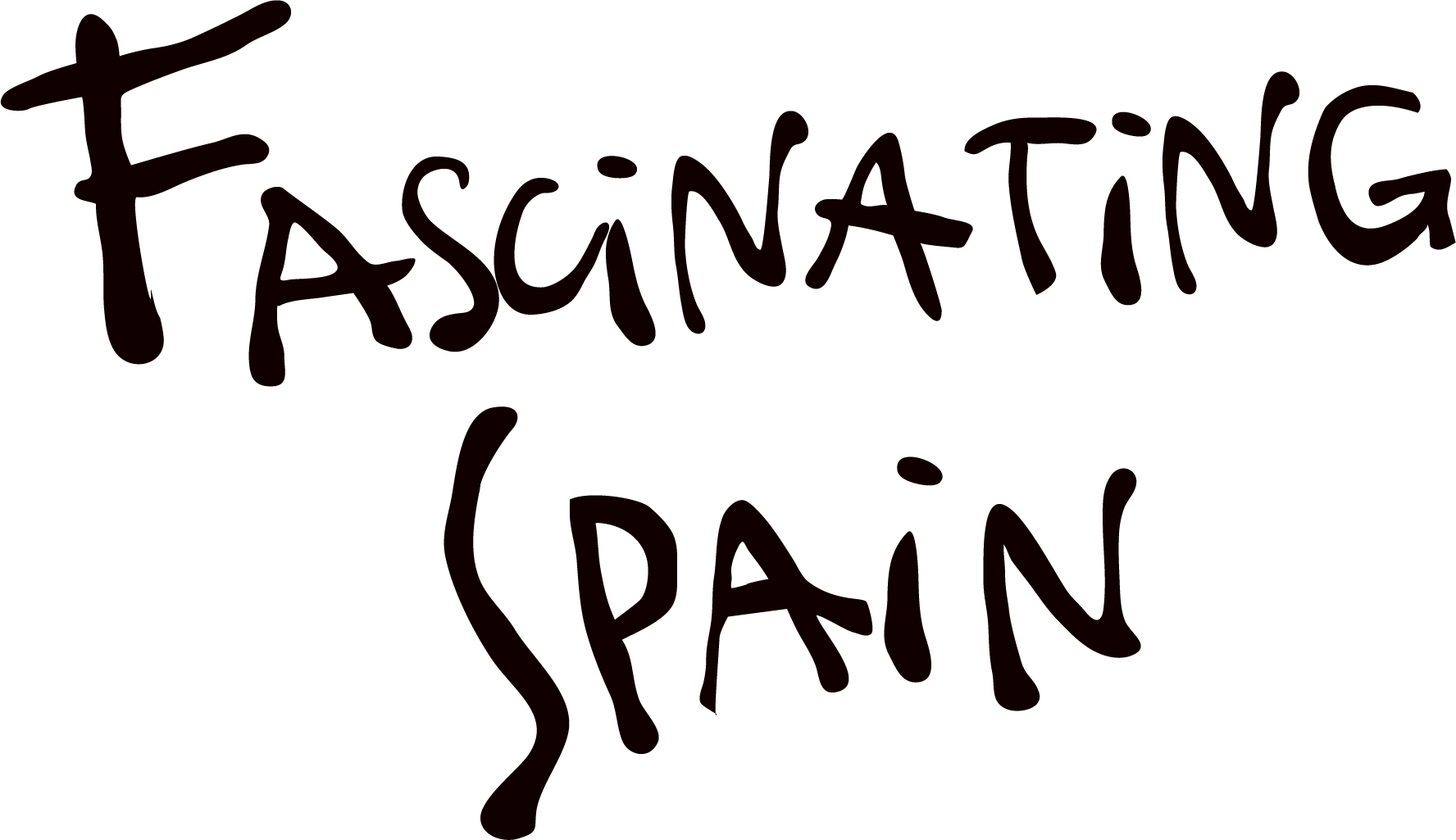
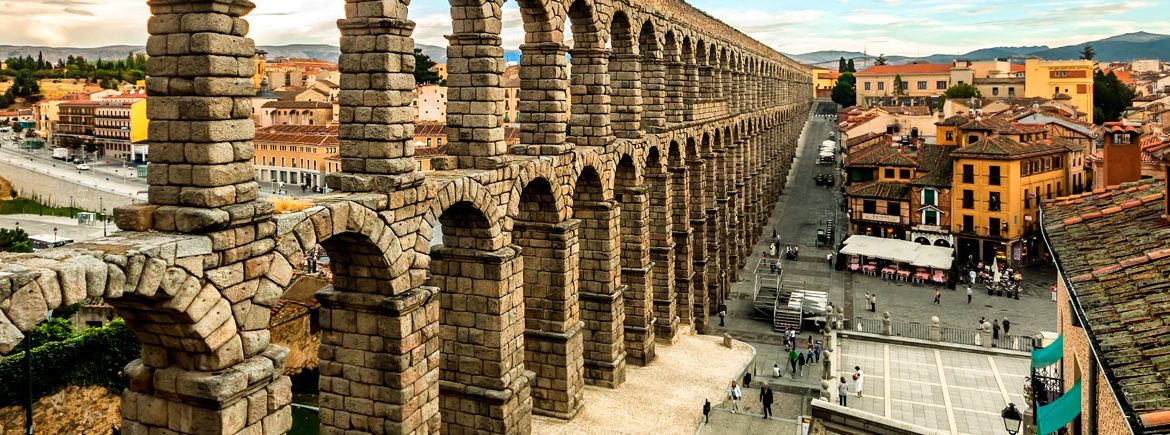
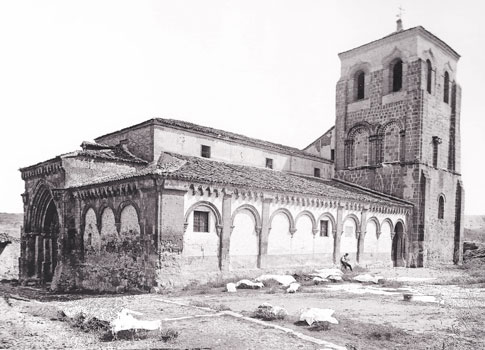



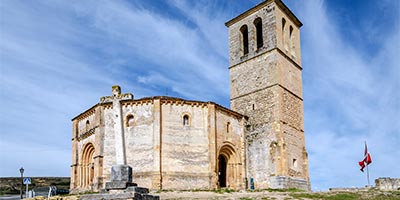
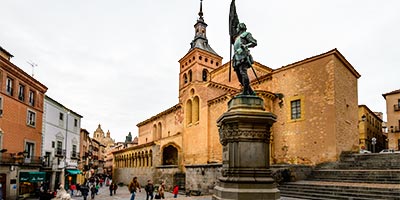
Comments